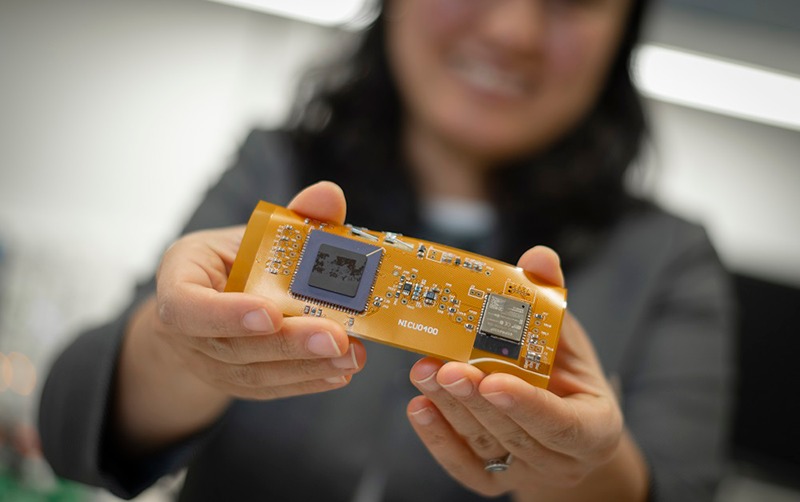
Researchers at Worcester Polytechnic Institute (WPI) in Massachusetts have developed a prototype flexible sensor the size of a Band-Aid that will measure a baby’s blood oxygen levels, a vital indication of the lungs’ effectiveness and whether the baby’s tissue is receiving adequate oxygen supply. The wearable device, which is wireless and inexpensive, may allow sick newborns to leave the hospital and be monitored remotely.
Read more Wearable Motion Sensors Monitor Fetal Heartbeat, Could Save Unborn Babies
Ulkuhan Guler, assistant professor of electrical and computer engineering and director of WPI’s Integrated Circuits and Systems Lab, is leading the project focused on enabling sick, hospitalized babies to be untethered from wired sensors, so they can more easily and frequently be examined, held, and even allowed to go home. Guler and her team have developed a miniature oxygen monitor for babies, which measures blood gases diffusing through the skin and reports the data wirelessly, reports WPI.
“Extended stays in the hospital are costly and can be a strain on families,” said Guler. “And studies have shown that babies’ health improves when they are with their families. Our goal with this affordable, mobile device is to give doctors more flexibility in monitoring their patients both in the hospital and at home.”
Conventional method of measuring oxygen molecules involves sensors wired to a monitor. But Guler’s device can accomplish that wirelessly. Through an alarm or mobile app, the device also notifies hospital personnel or family members if the baby’s oxygen level begins to drop.

The wearable device is designed to measure partial pressure oxygen (PO2), which indicates the amount of oxygen in the blood. PO2 is a more accurate indicator of respiratory health than a simple oxygen saturation measurement. And measuring the PO2 level via a noninvasive device attached on the skin is as accurate as a blood test, the WPI report said.
In another phase of her research, Guler plans to modify the wearable so that it can be used for adults with asthma and seniors with Chronic Obstructive Pulmonary Disease (COPD).
Read more Wireless, Soft, Flexible Sensors Show Promise in Monitoring Premature Babies
Guler is collaborating with Pratap Rao, associate professor of mechanical engineering at WPI, and Lawrence Rhein, MD, chair of the department of pediatrics and an associate professor at the University of Massachusetts Medical School. Ian Costanzo and Devdip Sen, both graduate students in electrical and computer engineering at WPI, also are working with Guler to create a chip that will eventually act as the heart for the wearable device.
“The concept of the technology is that if we have more accessible data for a person of any age, we’ll be able to better take care of these patients,” said Rhein, who has been advising Guler on what’s needed in a hospital and home setting. “The idea of noninvasive, untethered, accessible data collection opens up a whole new world of care.”











